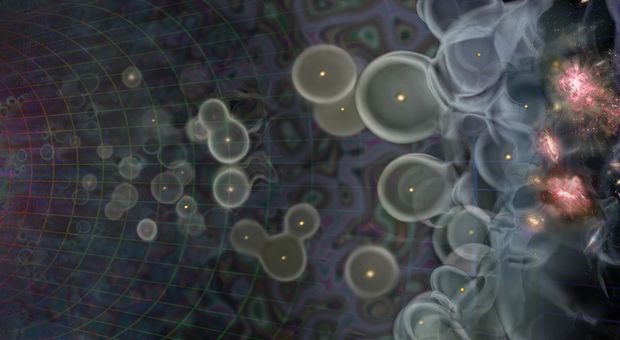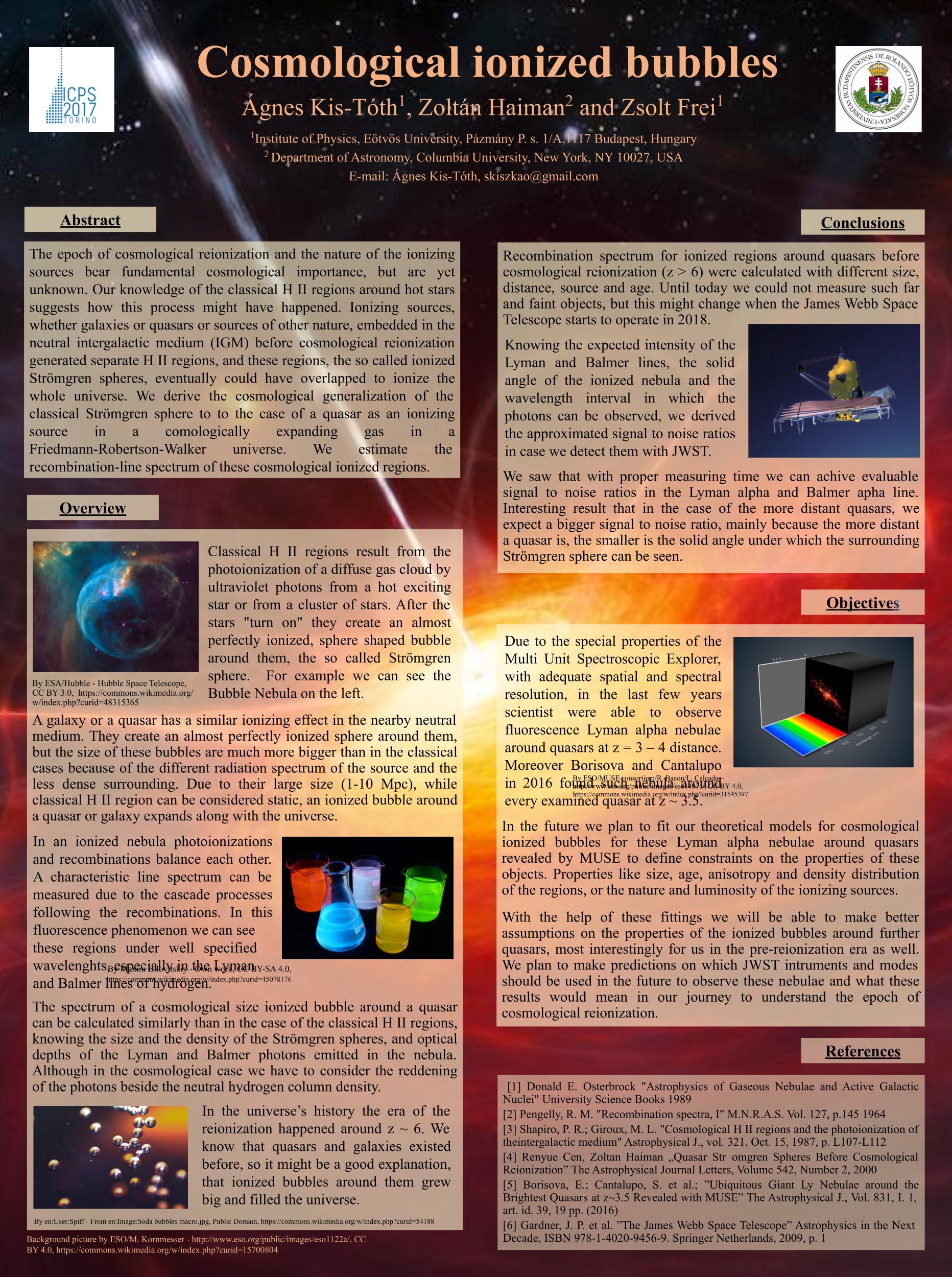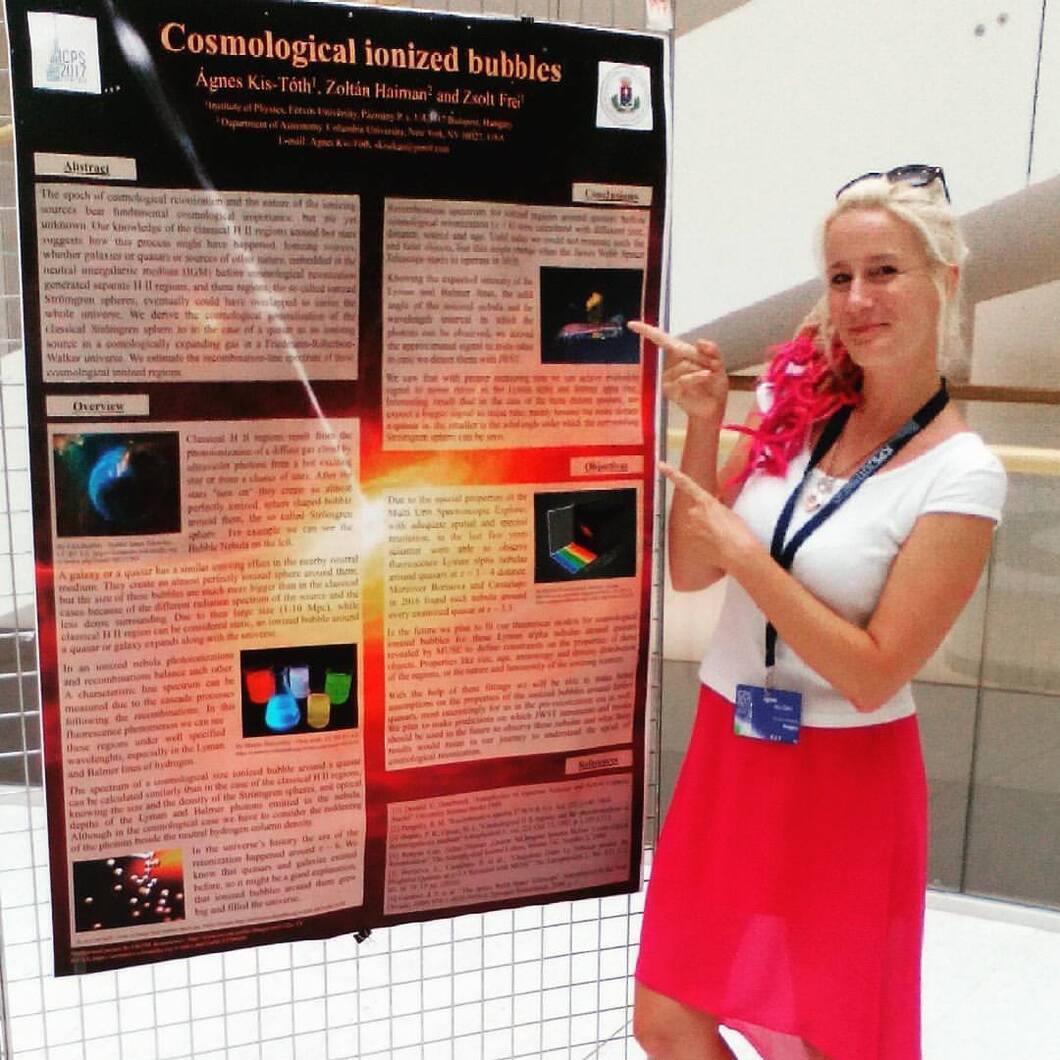|
|
Cosmological Ionized Bubbles
Classical H II regions result from the photoionization of a diffuse gas cloud by ultraviolet photons from a hot exciting star or from a cluster of stars. These sources create almost perfectly ionized sphere shaped bubbles around themselves, the so-called Strömgren spheres. The radius of such a region grows until it reaches an equilibrium state where the ionizations and recombinations balance each other. Quasars have similar ionizing effects in their vicinity. They create almost perfectly ionized nebulae around them, the cosmological ionized bubbles. These can be several orders of magnitude larger than in the classical case due to the higher intensity of the ionizing source and the less dense surrounding medium. While a classical Strömgren sphere is considered static, an ionized nebula around a quasar can expand along with the universe because of its enormous size.
|
|
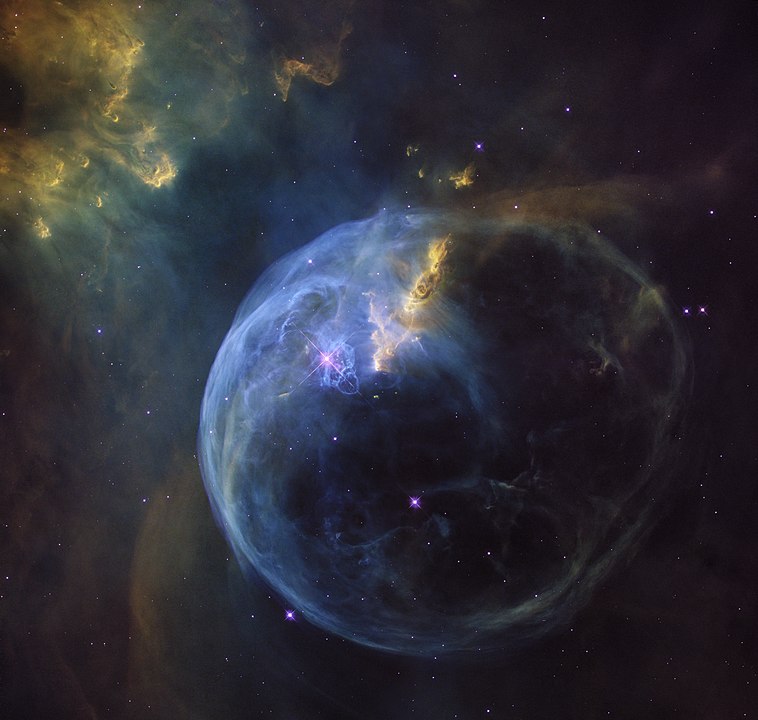 |
|
|
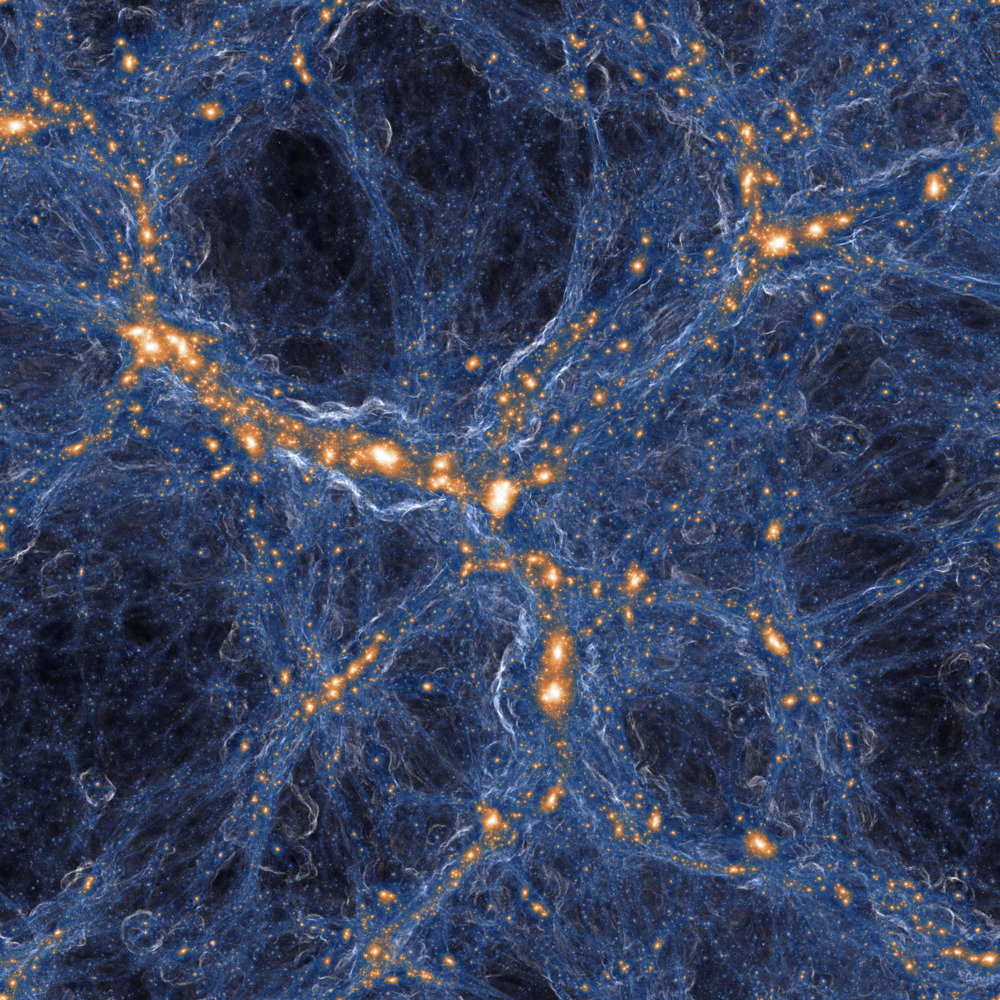 |
|
We use the basic theory of the classical Strömgren spheres and modify it to the cosmological case where we identify the sources with high redshift quasars in the expanding universe. The size, structure and evolution of these nebulae mostly depend on the ionizing spectra and the surrounding intergalactic medium (IGM). The density, the clumpiness, the temperature and velocity distribution of the IGM, the ionization rate prior to the luminous phase of the central supermassive black hole, and the amount of dust all play crucial roles. "Illustris TNG 100" simulation offers a good approximation in describing the nature of the circumgalactic and intergalactic medium at different redshifts, so we use that to have suitable initial properties of the gas and dust in our model. Finally we estimate the arising Lyman-alpha (Ly-α) surface brightness spectra of these ionized regions based on a detailed map of recombination events and radiative transfer processes.
|
|
|
|
Observations with the MUSE integral-field instrument of the Very Large Telescope revealed giant Ly-α nebulae around quasars in the redshift range 3-4. We investigate how well our basic theoretical approach of the fluorescent Ly-α radiation emerging after photoionization in a quasar's vicinity can explain the observed brightness in these nebulae. In addition to comparing our model with existing observational results, we aim to forecast the possible detection of such ionized regions before Reionization in the redshift > 6 era with the James Webb Space Telescope.
|
|
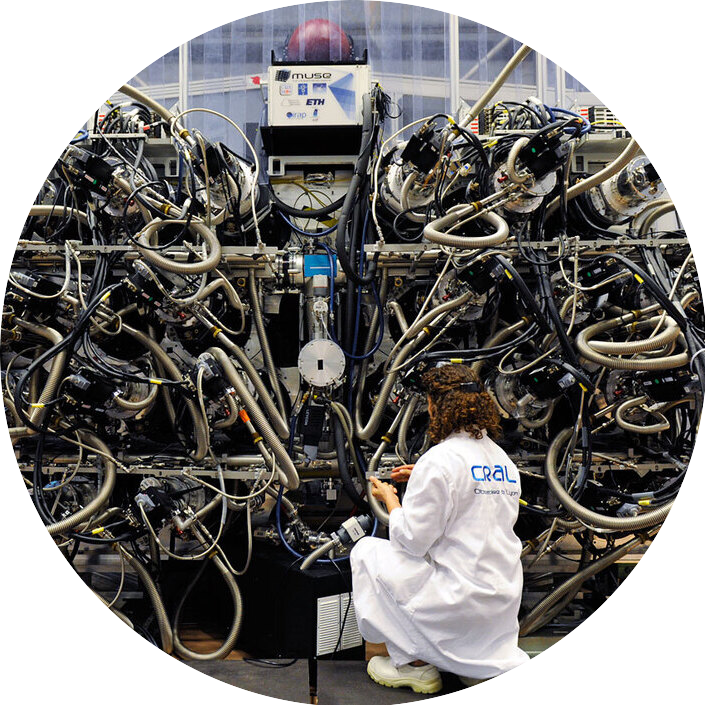 |
|
|
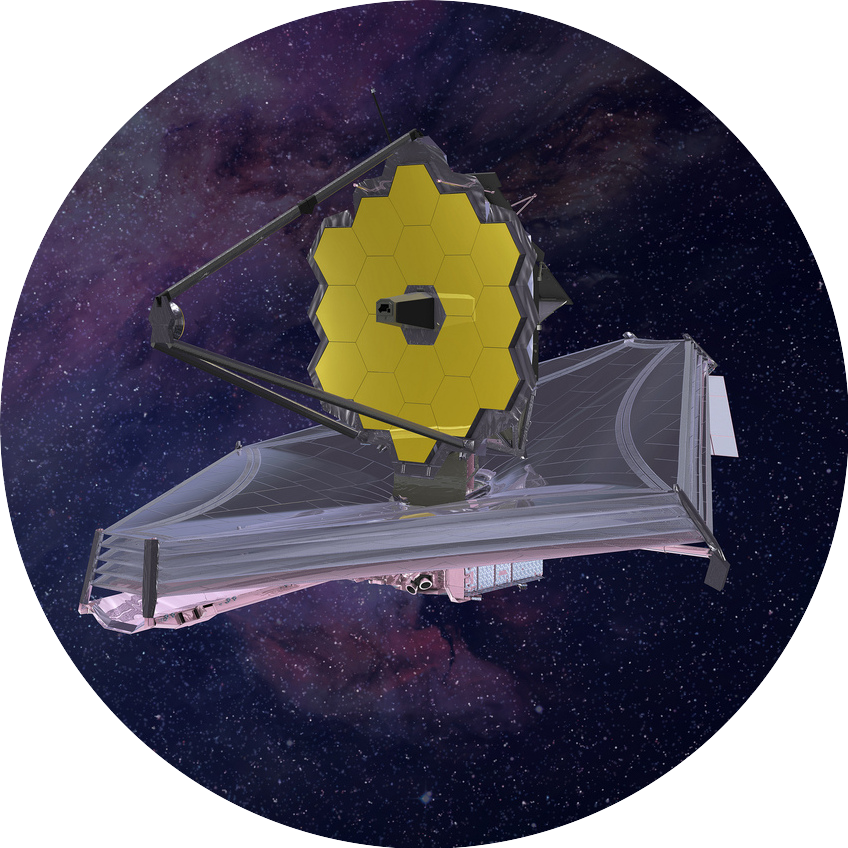 |
|
The epoch of cosmological Reionization is an important but still not well understood period in the history of our universe. Our current knowledge suggests that in the early universe ionizing sources, whether galaxies or quasars or sources of other nature, embedded in the neutral IGM generated separate H II regions, and these regions eventually could have overlapped to ionize the whole universe around redshift ~6. The goal of this research is to one day have a clearer picture about this era of major phase transition in the young cosmos, and the ionized bubbles that are responsible for it.
|
|
The Era of Reionization
